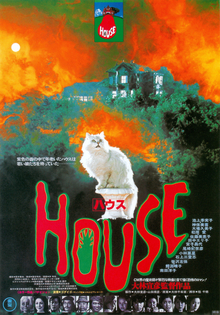
This manic Japanese horror film has achieved something of a cult status. It was the feature film debut of its director, Obayashi, who began his career as a director of TV commercials, which shows in the film's continued barrage of brightly colored images and in the loud (and banal) pop music soundtrack. The story deals with a gaggle of Japanese schoolgirls (with nicknames that translate as "Gorgeous," "Fantasy," "Kung Fu," "Melody," "Prof," "Sweet," and "Mac") who find themselves trapped in a haunted house. They do a lot of running, yelling, giggling, screaming, and dying -- one of them is literally eaten by a grand piano. Ultimately, the film had a huge impact on music videos, but it remains a one of a kind movie experience -- for which some of us remain thankful while others of us relish yet another instance of the unfettered imagination of a Japanese artist. In this case, the imagination was not just that of the director but also of his pre-teen daughter, whose ideas about things that frighten children were worked into the screenplay. A great deal of credit (or blame, if you will) goes to production designer Kazuo Satsuya and cinematographer Yoshitaka Sakamoto.